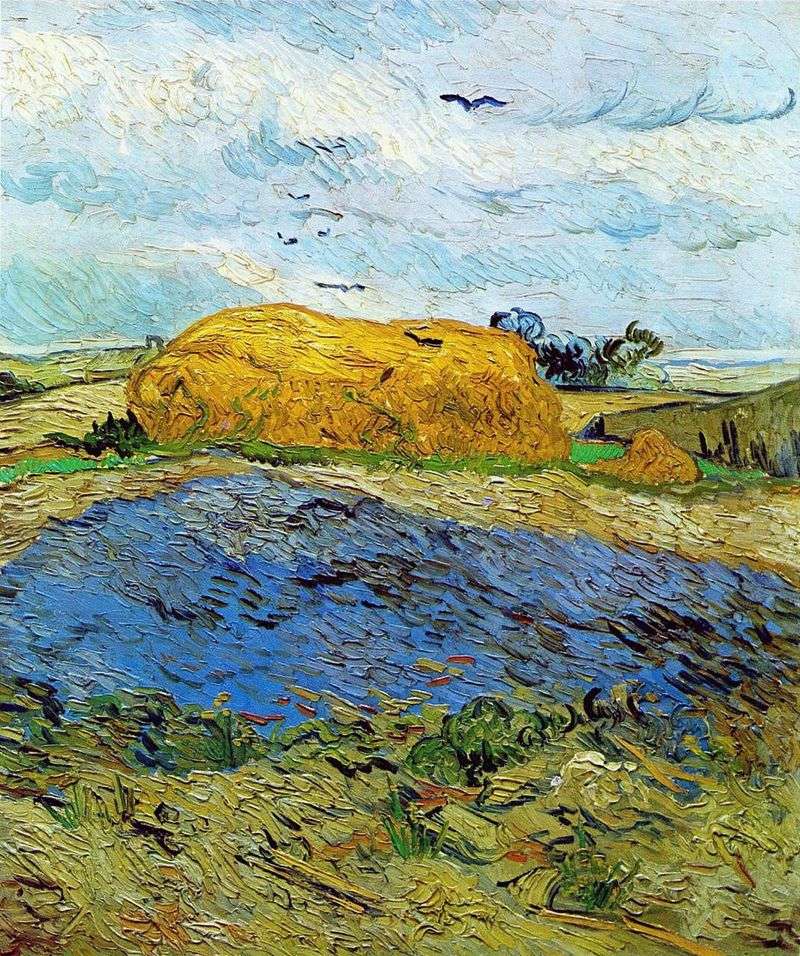
The picturesque painting by Van Gogh “The Sea in St. Mary” is a rather tense and impulsive landscape. The most part of the canvas is occupied by the image of the sea. The water surface is depicted as a restless, turbulent stream of water energy, sea elements. Smears, representing waves, are painted with a thick layer of oil paint, the canvas is overloaded, and the dynamics of the picture is extreme.
The plane of the plane accurately conveys the multidirectional and irreconcilable movement of water. The sea is restless, the energy of its depths has come to the surface and disturbs small and, it is possible, tiny sailing boats, tiny in comparison with the general water space.
The sea acts in a central way and captures the viewer with its relentless movement, in which inner life, a rush, increased breathing and the desire to exist are felt. The sea is a force, an infinite return, an endless quiet stream, akin to a stream of consciousness.
The sea in St. Mary’s is multicolored and multifaceted. The sky is almost as volatile and colorfully ambiguous. Two spaces seem to merge one with another: the sky reflects the impulses of the sea, and the water element rises upward, trying to reach and pierce the sky, saturate the air with moisture and wake the bad weather, disturb the surrounding world and cause a storm. Snow-white sails of numerous boats enliven the picture, saturate it with the truth of the moment, the authenticity of the experience.
Colorful strokes are painted as if the wind itself depicted them: impetuously and soon. The main image of the sea looks at the same time fragmented and whole. This is not a game, it’s not just a picture – it’s air, it’s part of life itself, for which you probably exist, you live to see this sea, these colors, this momentary life. Desperately fast, desperately, time passes, life passes. The surrounding reality and the colors that paint it – everything changes right before our eyes. The sea, like time, mixes colors, pushes light and shadow, extracting new images and spaces from this.
The sea is a space of instability, eternal movement, eternal rebirth. The image seems to be torn out, it does not have enough canvas. The sea is impossible to close in some strictly defined framework, it is irresistibly torn beyond the confines of its borders. The tops of the sails rest against the edges of the picture as if sensing the tightness of the canvas. A similar image resembles a photograph that captured the main, without focusing on excessive detail.
 Irises by Vincent Van Gogh
Irises by Vincent Van Gogh Sunflowers by Vincent Van Gogh
Sunflowers by Vincent Van Gogh Haystacks in the rainy sky by Vincent Van Gogh
Haystacks in the rainy sky by Vincent Van Gogh Night Cafe Terrace by Vincent Van Gogh
Night Cafe Terrace by Vincent Van Gogh Olive grove by Vincent Van Gogh
Olive grove by Vincent Van Gogh Three sunflowers in a vase by Vincent Van Gogh
Three sunflowers in a vase by Vincent Van Gogh Irises by Vincent Van Gogh
Irises by Vincent Van Gogh Bridges across the Seine by Vincent van Gogh
Bridges across the Seine by Vincent van Gogh